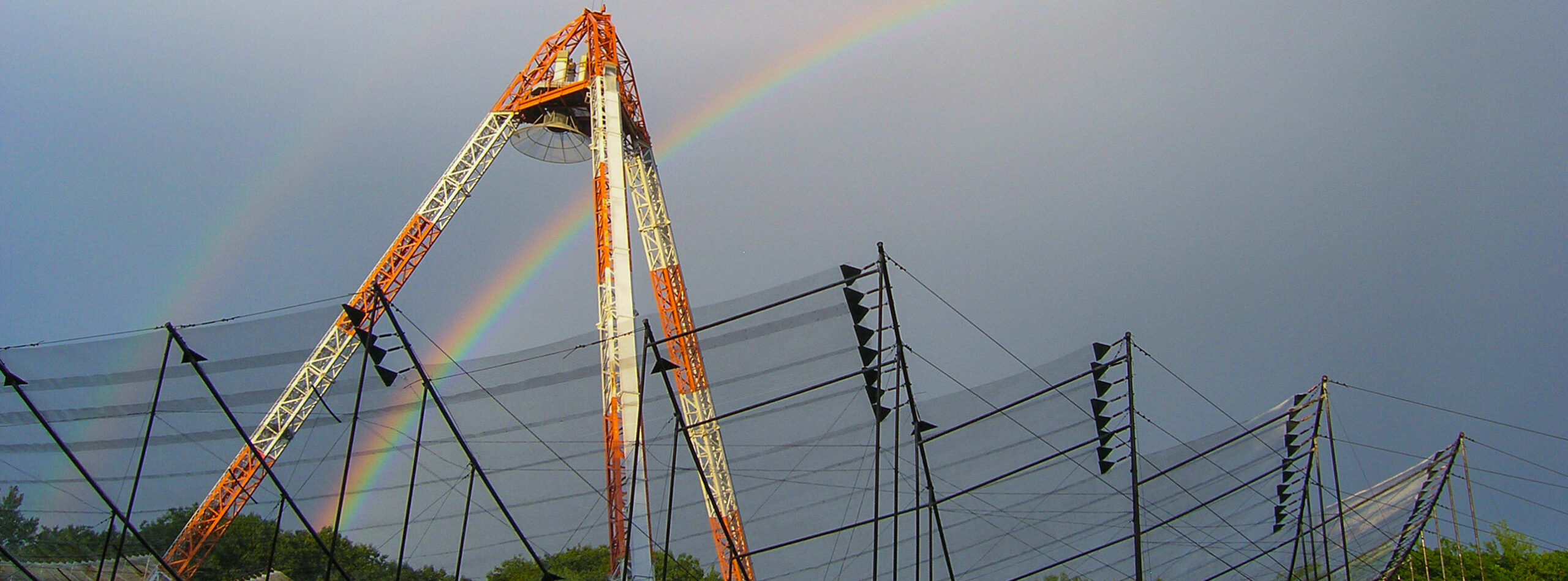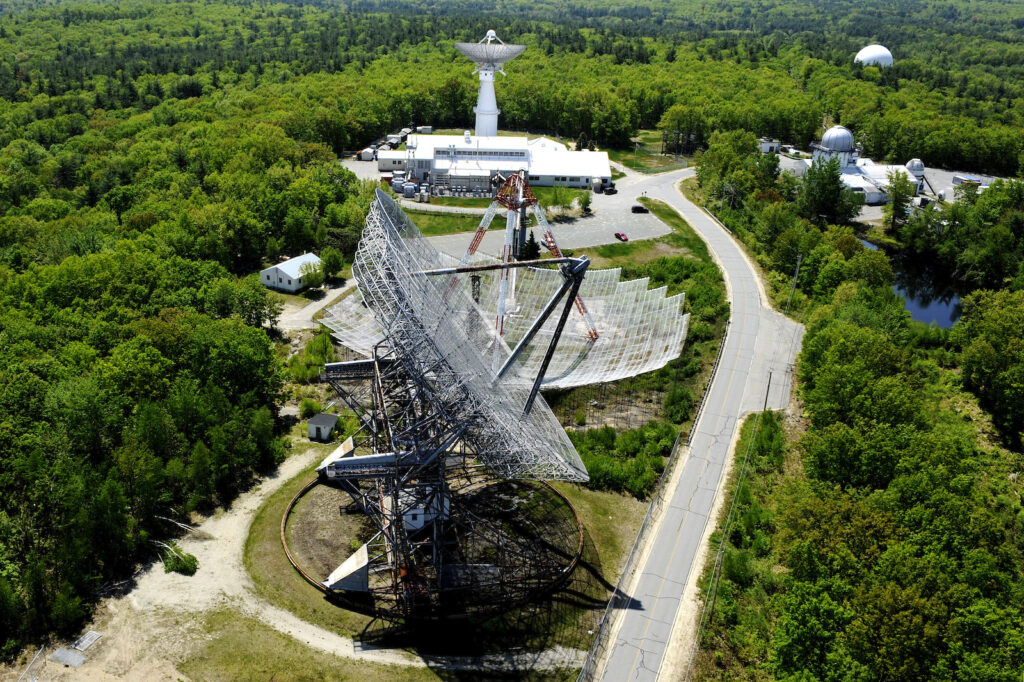
Millstone Hill Incoherent Scatter Radar
Incoherent scatter radar (ISR) has proved to be the most powerful and flexible ground-based instrument for probing the dynamics of thermal plasma in Earth’s ionosphere. The technique uses very weak Thomson radar scatter from free ionospheric electrons, electrostatically modified by the presence of multiple ion species, and allows full altitude profiles of the ionospheric plasma parameter state (temperature, density, composition, velocity).
Download the Millstone Hill Incoherent Scatter Radar brochure
Particular advantages of high-power, large-aperture incoherent scatter radar include the unique ability to directly sense full altitude profiles of both electron and ion temperatures at low energies, ion composition, ion velocities, and photo-electron populations through enhanced Langmuir mode scatter. Through derived analysis, other key parameters such as neutral temperature and ion-neutral collision frequencies can also be measured. Scattering theory for this remote sensing application is in nearly all cases robust and well characterized, providing full radar diagnostic capability at varying temporal resolutions depending on ambient electron density.
The technique was pioneered by Professor William Gordon at Cornell University in the late 1950s. During this period, the Haystack radar complex was already established by MIT for large-aperture radar development, and the UHF system that emerged from that activity was ideally suited for the new technique. Haystack researchers have since then provided continuous and fundamental advances in incoherent scatter radar theory and experimental practice, as well as a practically continuous series of observations of the mid-latitude ionosphere and its variations.

Selected milestones
- First experimental measurements of ionospheric electron temperature [1960]
- First completely computer based incoherent scatter plasma temperature analysis [1965]
- Mid-latitude observations of very weak Langmuir mode/plasma line signals, providing precise electron density and temperature measurements [1968]
- Key widefield subauroral and high-altitude electric field measurements [1979]
- Full-profile incoherent scatter analysis methods for mid-latitude experiments [1991]
- Bistatic incoherent scatter radar experiments at mid-latitudes with high-gain UHF receiving systems in Algonquin, Ontario, Canada [1995] and NRAO Green Bank, WV [2006]
- RPC-based [1992] and workstation-based [1998] fully digital software radar systems
- Long-term empirical ionospheric models using the decades-long Millstone Hill incoherent scatter radar observational record [2002]
- MIDAS-W software radar system [2003]
- Global views of large scale ionospheric disturbances [2005]
- MAPGPS total electron content mapping [2006]
- MIDAS-M software radio network [2007]
- Storm enhanced density studies [2007]
- Space weather and the global positioning system [2008]
- Sudden ionospheric signatures of stratospheric warming [2008]
- Geospace Science Center [2010]
- Steerable antenna control and safety upgrade [2012]
- Signatures of rocket engine burns in the ionosphere [2012]
- Wave signatures of sudden stratospheric warming [2013]
- Mobile crowd sensing for space weather monitoring [2014]
- Next-generation software radio systems [2016]
- Regular plasma line measurements [2016]
- August 2017 solar eclipse observations [2017]
- Space weather effects on the radiation belts [2018]